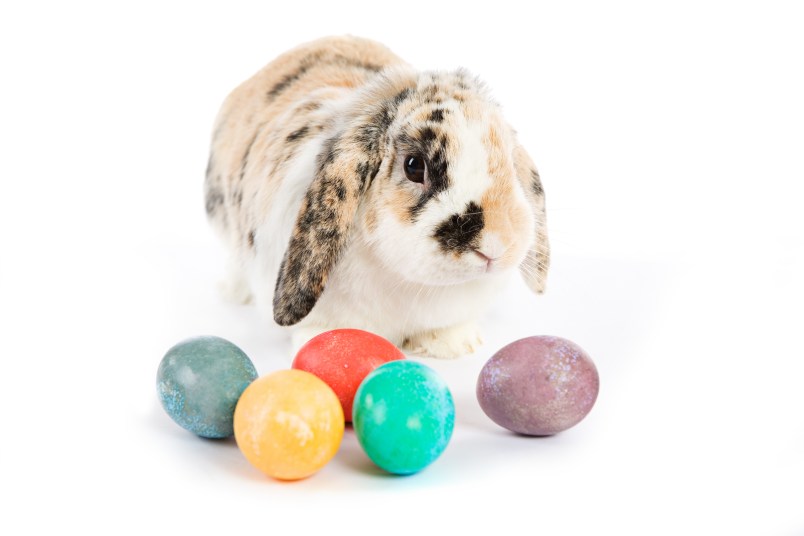Some People Actually Aren’t Sure If Bunnies Lay Eggs

The Easter Bunny and Easter eggs go hand in hand, which might be why so many people wonder, “Do bunnies lay eggs?” Though anyone who has ever owned a pet rabbit might find this question silly — and the answer obvious — the story of the Easter Bunny’s origins makes clear why some people ask that question. So, do rabbits lay eggs? And how did we end up with a mythical bunny who delivers eggs as the symbol of Easter in the first place?
Admit it: The idea of a rabbit laying eggs doesn’t seem so farfetched. Images of rabbits and eggs are everywhere come Easter, so we can’t fault people who think that one comes from the other. However, rabbits do not lay eggs. As mammals, they give birth to live young — and at an alarmingly fast rate, too. (Just how many babies can a rabbit have? One mama bunny and her descendants can produce more than 184 billion — yes, billion — rabbits in just seven years.)
The complicated relationship between eggs, rabbits, and Easter dates back hundreds of years, and their origin stories seem to intertwine. According to the University of Florida’s Center for Children’s Literature and Culture, in pre-Christian Germany, there was Eostra, the goddess of spring and fertility. (The word Easter was actually derived from Eostra.) According to myth, a young girl found a wounded bird and prayed to Eostra to help. The goddess appeared and turned the bird into a hare before telling the little child that from that point on, the hare would return each year and bring rainbow-colored eggs. When Roman Catholicism became the major religion in Germany around the 1400s, citizens merged their pagan beliefs with those of Christianity, and the Easter egg became a symbol of Jesus’ resurrection.
Another story goes that the lairs of ground-nesting birds, like lapwings and plovers, closely resembled the grass holes where young hares nestle to wait for their moms. As a result of the similarity in appearance of the two, the legend that eggs came from the hares was born.
By the 1500s, the first mentions of an Easter Bunny began to pop up, and around 1680, stories about rabbits laying eggs and hiding in the garden were published. These tales made their way to the United States via immigrants settling in Pennsylvania Dutch country. As the decades went on and the first edible Easter eggs were released to the public in the 1800s, the story of the Easter Bunny became more commercialized. Candy companies were able to cash in (literally!), and last year, the National Retail Federation predicted Americans would spend nearly $2.6 billion on Easter candy alone. Now, that’s a lot of cavities!
Get in an Easter mood with Tinkerbelle the dog in the video below.
More From FIRST
Delicious DIY Crafts Made With Peeps to Prep for the Easter Holiday
Kids Can Call the Easter Bunny This Year
10 Easy PAAS Tricks That Make Your Easter Eggs Downright Professional













